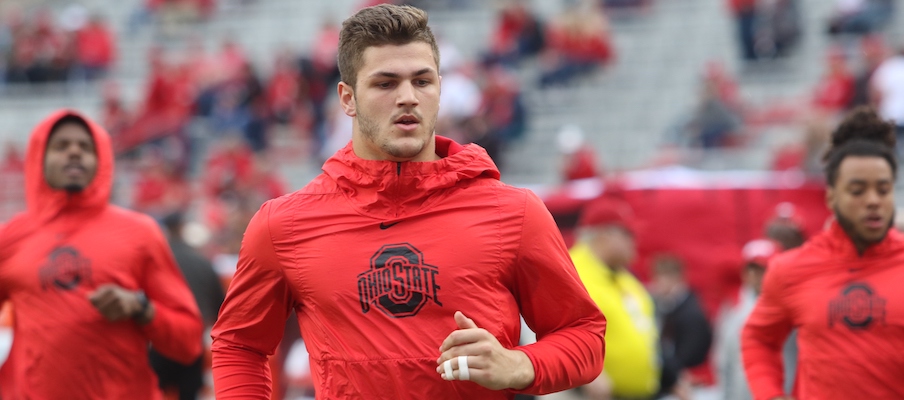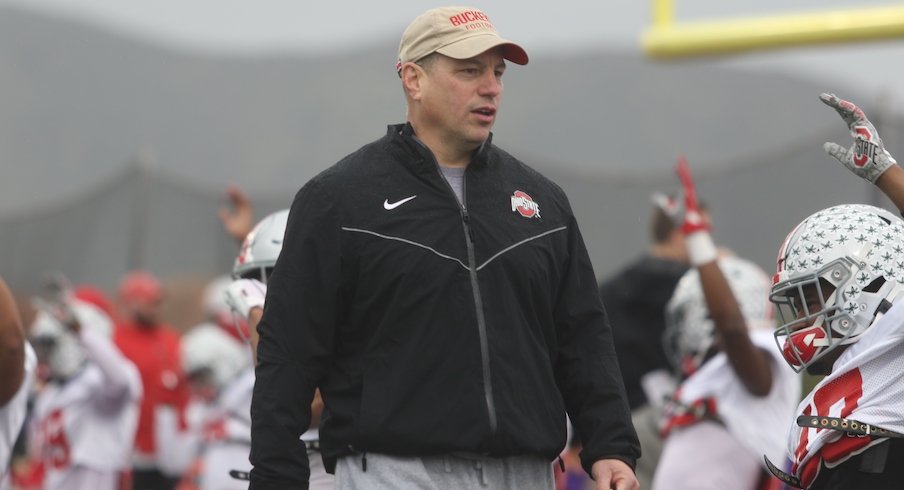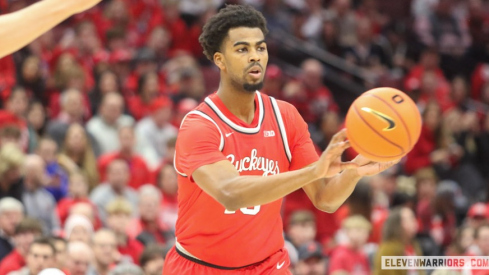Former North Carolina defensive end Beau Atkinson commits to Ohio State.
As they’ve been away from campus for the last two months due to the COVID-19 pandemic, one of the biggest challenges Ohio State’s football players have faced is finding ways to keep their training regimens going without the resources they normally have at the Woody Hayes Athletic Center.
Some players have weight rooms in their homes or access to gyms elsewhere, while others have far more limited resources. That’s made the job tougher for Mickey Marotti and the rest of Ohio State’s strength and conditioning staff, as they’ve had to come up with a wide variety of different workout suggestions for different players based on the resources they have available to them.
“We might have 30 players training at one time (under normal circumstances), and it’s easy, you give them a message and they get it, they know what’s going on for the next day, they move on. And then here come the next 30. And then you’re done,” Marotti said during a teleconference on Wednesday. “Now it’s 30 separate different messages, and 30 separate different calls and 30 separate different emails and texts. It’s no doubt twice as busy as if we were still in the Woody.”
Thanks to the athletic department’s resources, Ohio State has some advantages that other schools might not. The program was able to send all of its players a three-pack of resistance bands – one that mimics 75 pounds of resistance, one that offers 50 pounds of resistance and another that offers 10 – allowing every player to use those for workouts. Marotti and his assistants can also prescribe exercises like push-ups, sit-ups and crunches that don’t require any equipment.
Many players have also created their own makeshift equipment for weight training. Offensive lineman Matthew Jones, a Brooklyn native who has been mostly confined to his home at the epicenter of the pandemic, filled a pair of milk jugs with dirt to use as dumbbells. Tight end Jeremy Ruckert, who lives on Long Island, built a wooden squat rack with his dad to use with old weights he had around the house. Other players have filled backpacks up with rocks or pushed cars or lawnmowers, Marotti said.
Some makeshift workout equipment has worked out better than others, though; offensive tackle Nicholas Petit-Frere broke a gutter off the side of his house when he tried to use it to do pull-ups.
“His mom wasn’t too excited about that, so we had to come up with a different plan for him,” Marotti said.

Marotti said he and his staff have maintained an Excel spreadsheet to keep track of what workout equipment each player has available, allowing the strength and conditioning coaches to adjust each player’s workout plans to the resources they have.
Ohio State’s players have access to a strength and conditioning app which Marotti and his assistants use to send them workout plans, and each of the five strength coaches – Marotti, Quinn Barham, Chris Fenelon, Niko Palazeti and Kenny Parker – has an assigned group of players who they check in with individually. Marotti, himself, tries to FaceTime and text as many players as he can to keep up with how they’re doing.
Because of NCAA rules, however, Ohio State isn’t allowed to mandate workouts for its players when they’re away from campus. While Marotti and his staff suggest workouts with the expectation that players will do what they can to stay in shape, they aren’t allowed to monitor workouts as they happen or require players to send in workout videos.
Marotti knows some players will do a better job keeping themselves in football shape than others, which means that whenever the players are able to return to campus, he and his staff will likely have to split players into workout groups based on how well they’ve done on their own.
“We made an analogy of the 10-80-10 rule Coach Meyer used to talk about all the time. Right now, we’re probably in my mind maybe 30-50-20,” Marotti said. “30 percent are just probably in the best shape of their life, and then 50 percent in good shape, and then you got the last 20 percent maybe that has fallen behind a little bit. So I think you’re gonna have to train those athletes when they come back differently, because they’re gonna be in different spots. You can’t have a program based on the top 30 percent and then have everybody else expected to keep up. That’s unsafe.”
Those are the kind of concerns that keep Marotti awake at night during what he says has been the “most difficult endeavor of my professional coaching career.” But he is pleased with the efforts the Buckeyes have taken to be accountable over the past two months, as he believes they have done a good job adapting to trying times.
“I’d call (Justin Fields), FaceTime him, and he’d be walking around in circles in his living room. Like Justin, sit down, relax, man. And then as time has gone on, he’s really gotten himself into a routine, and that’s what we’ve preached to our players during this time,” Marotti said. “You have to get into a routine. You can’t stay up all night playing video games. You can’t be all over the place. You have to be in a pretty accountable routine of getting up and having breakfast and working out and doing your schoolwork and doing your meetings and just having those things throughout the day.
“As time has gone on, you can really see and hear the maturity of some guys that nine weeks ago or 10 weeks ago, whatever it’s been, it was like despair almost. An anxious despair of ‘What’s happening?’ But it’s actually kind of promising.”
Marotti has reminded the Buckeyes that every other college football team is facing unusual circumstances, too, and that the work they put in on their own during this time could make them better than their competitors once they are allowed to return to the field – or, if they don’t do what they’re supposed to do, they could get worse.
“You can’t make an excuse about a circumstance that we all have to deal with,” Marotti said. “There’s other people, our competitors, our teams that we’re gonna play, are they working harder than you are? I know you don’t have equipment, I know you don’t have weights, I get it. I know it’s raining outside. But at some point, this thing’s gonna be over, and again, you’re either better or you’re worse. So we pretty much have led that message, and just make sure our leaders are permeating throughout the team when they talk to each other.”
Marotti can back up those words with his own actions, as he’s been doing what he can to keep himself in shape during the pandemic, as well.
“The Marotti house, we’re now fully stocked with bicycles. So we go on road races with my son, we go all the time,” Marotti said. “We have kettlebells and bands and dumbbells in the basement, and everyday I’m down there doing something. I do the elliptical every day for a minimum of an hour. Within that hour, I’ve read probably 11 books. I haven’t read a book in 25 years, from cover to cover, I think I’ve read 11 already, while I’m on the elliptical. My whole family – my wife, my daughter, my son – we all walk and we try to beat each other’s steps as much as we can. So yeah, we’re pretty busy, in and out of dealing with players and talking to our staff and things like that, so yeah, that’s been fun.”


